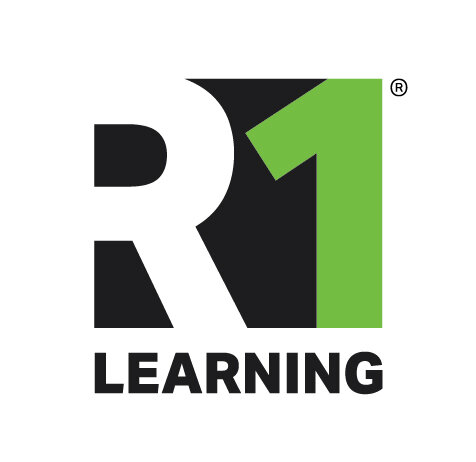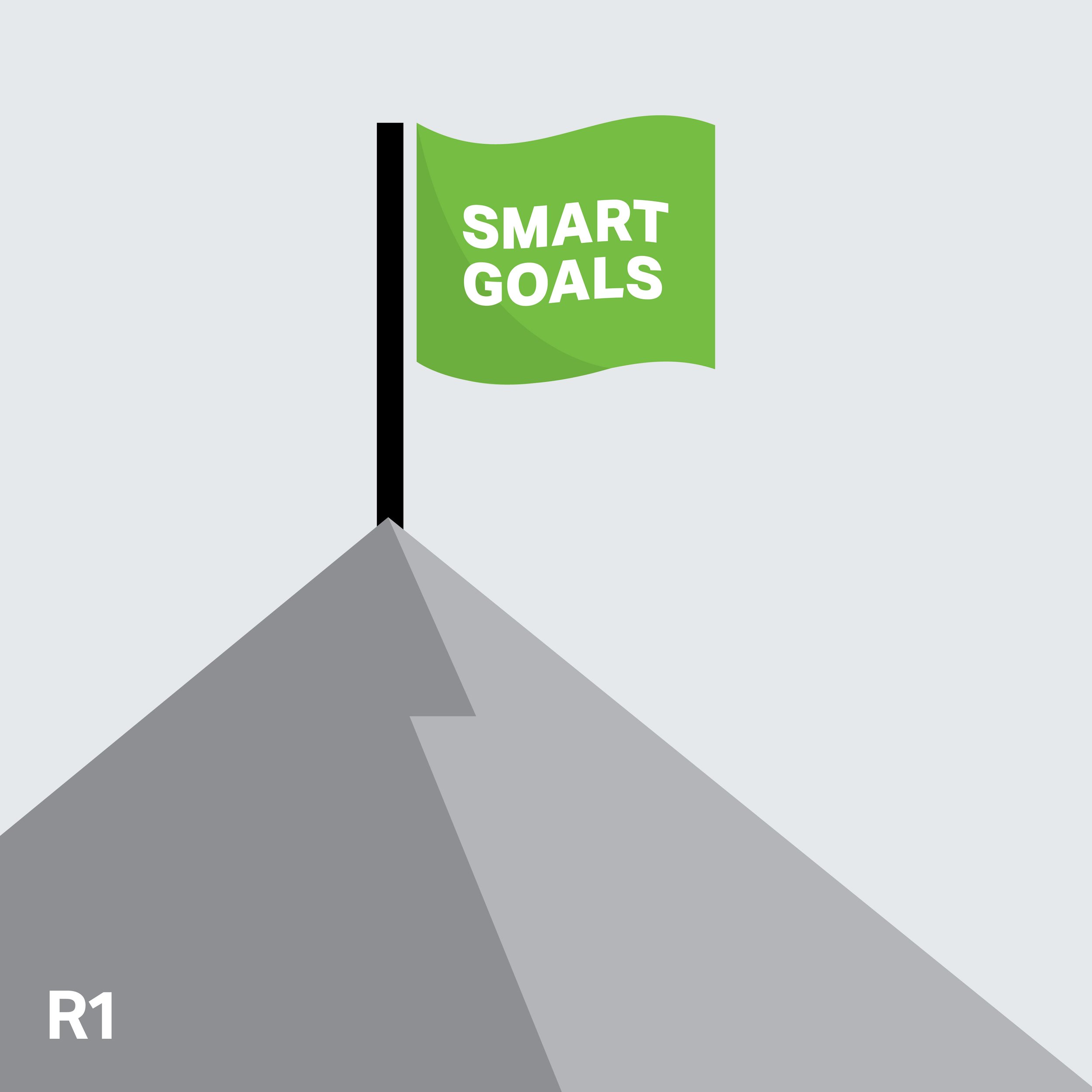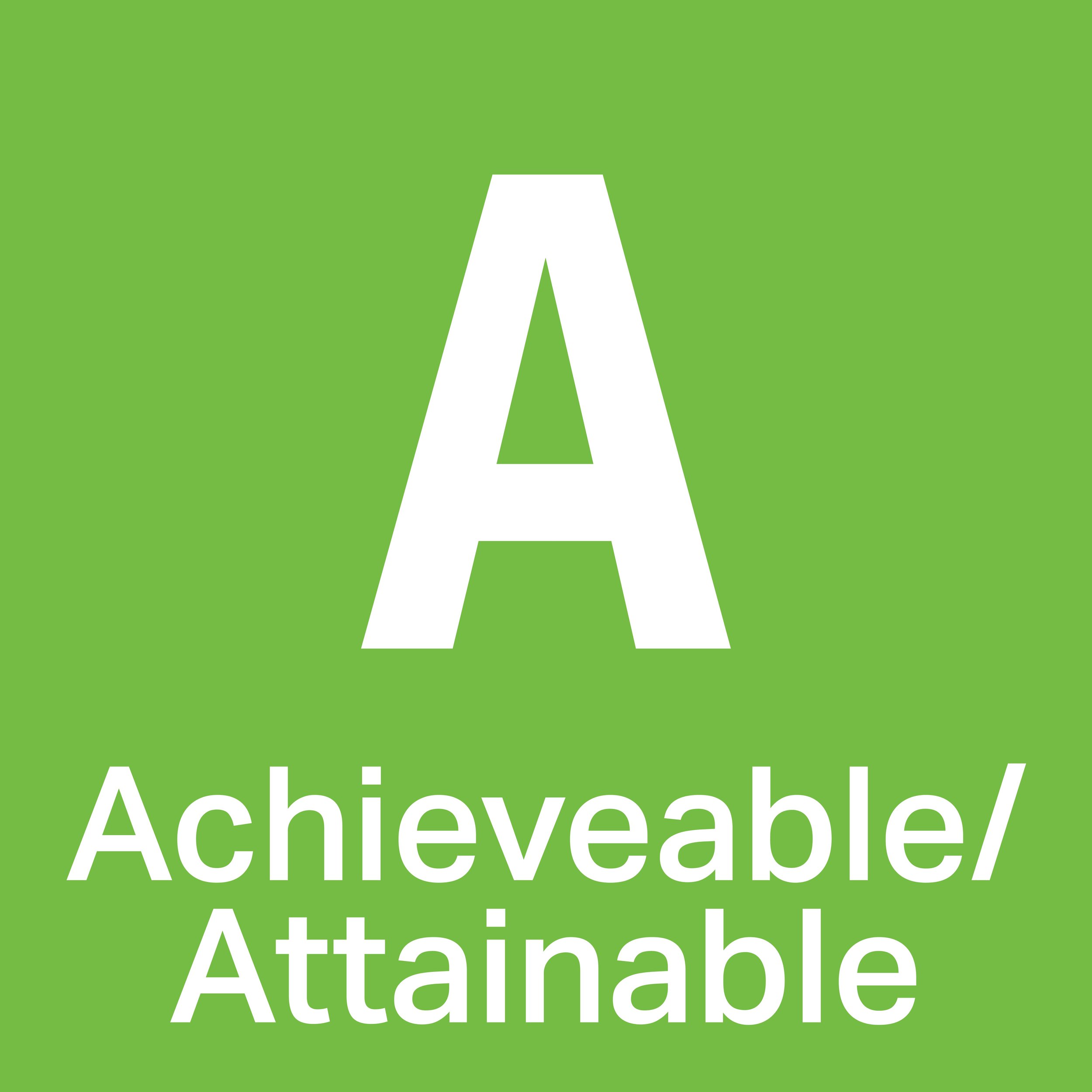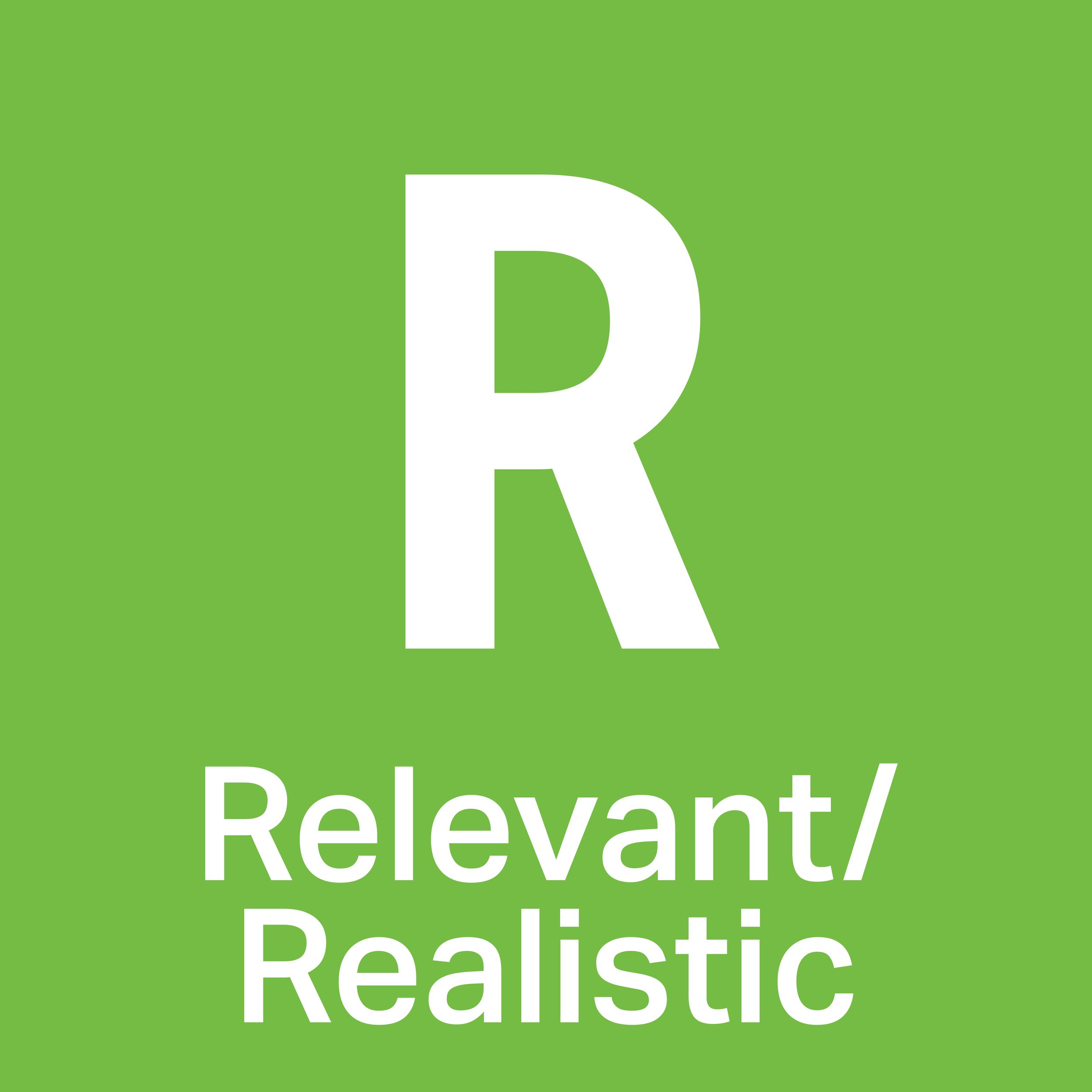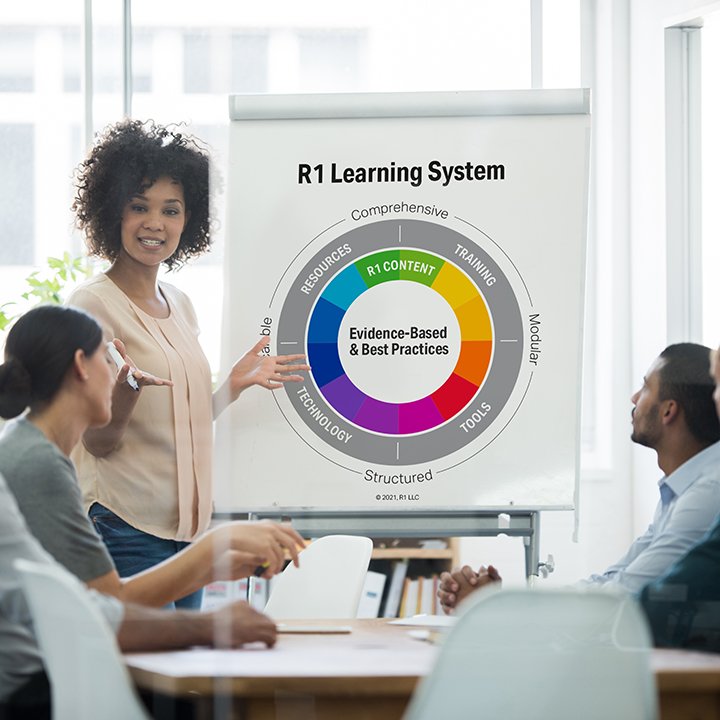SMART Goals — What Makes SMART Goals Smart?
They make you think! That’s the simple answer to the question. Thinking and reflecting on goals make them real and concrete. This internalized goal drafting and crafting process sparks and motivates individuals onto the path of behavioral change. Self-efficacy is a belief in one’s competence to successfully accomplish a task and produce a favorable outcome. Self-efficacy plays a major role in determining one’s success — individuals with high self-efficacy are more likely to put forth sufficient effort that leads to successful outcomes; those with low self-efficacy are more likely to stop efforts early and fail. (Bandura 1977, 1982). Goals are mostly achievable when the are purposeful and aligned with one’s values. As we shared in our post, 10 Values Types and How They Motivate Behavioral Change, when values are activated, they become infused with emotions and feelings and move individuals to behavior. Visioning and clarifying a goal, and the benefits that result, internalizes the goal and builds ownership for it. The journey and process for setting goals is the goal of goal setting. SMART Goals provides the structure for enabling and maximizing the process.
SMART Defined
Take a moment to read through each of the SMART criteria below to get your bearings. Make your reading concrete by reflecting on and exploring your experience for a goal you’ve achieved or one you were unable to reach. Go with your strengths or “success” as a first step. Come back a second time to assess where you may have paused, lost energy for, or got stuck along an unsuccessful goal journey. Both are important to reflect on to gain awareness and insights for the future.
S—Specific: Definition: Clearly defined or identified. Constituting or falling into a particular category — an exact area, problem, or subject. Synonyms include definite, distinct, precise, certain, exact, and clear-cut. Antonyms include ambiguous, vague, imprecise, general, and fuzzy. Other “S”s to think about are Several, Smaller, Specific, SMART goals. Is the goal specific? The more it is defined the better. More often, goals are best broken down into smaller, more specific, bite-sized ones. Success breeds success. Achieving smaller goals on the road to one’s envisioned larger goal builds confidence, energy, and more self-efficacy along the path.
M—Measurable: Definition: Capable of being measured. Something that can be quantified or described in specific terms. Synonyms include quantifiable, assessable, appraisable, and guageable. Antonyms include indeterminable, imperceptible, immeasurable, and insignificant. Visioning or beginning with the end in mind is important for successful goal achievers. “What will it look like when I achieve it?” or “How will I know I’m there?” are questions that help individuals clarify the specific outcomes they are working toward. Note that “measurable” is often described in specific or numeric terms such as size, amount, quantify, frequency, duration, or mass.
A—Achievable/Attainable: Definition: Capable to succeed at reaching or accomplishing a result, task, or goal, especially through effort. Synonyms include feasible, obtainable, possible, and doable. Antonyms include impossible, impractical, unachievable, and unattainable. In other words, can you actually do it and make it happen from a practical perspective. Mount Everest’s peak is typically not reached on the first day. There are many steps to consider when assessing the viability of a goal like this. Do I have the money for a plane ticket to the Himalayas? Am I able to take off months from work in order to pursue this ambition? Do I have the physical ability to climb at high altitudes? Am I afraid of heights? …and so on. Pausing and reflecting for a moment to evaluate what’s possible is critical for this criteria.
R—Relevant/Realistic: Relevant: Definition: Closely related or connected to the purpose or matter at hand. Synonyms include admissible, applicable, and compatible. Antonyms include inapplicable, inappropriate, and irrelevant. Realistic: Definition: Showing a sensible and practical idea of what can be achieved; accurately accepting what is fact or real. Synonyms include practical, pragmatic, sensible, and reasonable. Antonyms include impractical, unrealistic, unreasonable, and irrational. These are actually two different criteria to consider as you review and evaluate your goals. Let’s comment on the first. The relevance of one’s goal to the purpose at hand, and one’s values, is one of the most important criteria to pay attention to. How is your goal connected to your purpose at hand? The more goals can be linked to one’s purpose and values, the more individuals will be motivated to achieve them.
T—Timebound: Definition: Requiring completion by or within a specific period of time. Synonyms include deadline, time-specific, and time-limited. Antonyms include indefinite period, not defined date, not defined time. Placing a date or specific time frame for the completion of a goal makes it real and moves one to action. Setting a realistic deadline is important for the task at hand. This step of the process will sometimes demotivate goal setters as deadlines are a form of commitment. As individuals build goals, or work with others to build them, plan to set the best deadlines possible when drafting the initial goal. Goal deadlines can always be adjusted. Purposeful goals have a high probability for attainment with patience, frequent re-commitment, and readjustment of the timeline as needed. Bottom-line, setting an ideal timeline is important, but remember it’s not in stone. Being willing to renegotiate or readjust the date is better than stopping progress completely for not meeting the original date or time.
SMART Goals Worksheet and Activity
Let’s do it! Having a template for thinking about goals is critical for success. Let’s put this new knowledge into practice. Take a moment to review the sample SMART Goal Worksheet below. Download or print off the blank worksheet and craft a SMART Goal for something purposeful and relevant to you. Consider this your first draft. Use the SMART criteria above to help guide you. Do take a moment when you are done and check-off the SMART Check boxes if you meet the criteria. Answer the Questions To Explore below.
Questions to Explore
Answer these questions for yourself or someone you are working with.
How have you used SMART Goals for setting goals in the past? Explain.
How does having a structured approach for goal setting resonate with you? Explain.
Which of the SMART Goals criteria were easiest for you to address?
Which of the SMART Goals criteria were most difficult for you to incorporate?
How are you more motivated to achieve your goal as a result? Explain.
What did you learn about yourself and your goal in the process?
What did your find most helpful about this post? Explain.
Using the Discovery Cards for SMART Goals
One of the major benefits for using the R1 Learning System’s Discovery Cards is that each Discovery Card can be used as the foundation for a SMART Goal. We’ve designed the system, both the hands-on and R1 Discover App, so that each Discovery Card (i.e. value, warning sign, trigger, boundary behavior, career interest, affirmation) can be used as the focus for a goal. You’ll see a row at the top of the SMART Goals Worksheet for the R1 Topic, Discovery Card, and Model Area. This enables groups and one-on-one sessions to use this tool for Discovery Cards activities. In the future, R1 Discover App users will be able to bookmark Discovery Cards and use them for journaling, building SMART Goals, or practicing Cognitive Behavioral Therapy (CBT). Practitioners will also be able to select and use specific Discovery Cards to practice preparing for and using with Motivational Interviewing (MI). All leveraging the individuals choices, building on them, and tapping into their intrinsic motivation.
References
Bandura A. “Self-Efficacy Mechanism in Human Agency.” American Psychologist 37:122–147, 1982.
Bandura A. “Self-Efficacy: Toward a Unifying Theory of Behavioral Change.” Psychological Review 84:191–215, 1977.
Copyright 2024 R1 Publishing LLC / All Rights Reserved. Use of this article for any purpose is prohibited without permission.
Here are a few ideas to help you learn more about R1 and engage others on this topic:
Share this blog post with others. (Thank you!)
Start a conversation with your team. Bring this information to your next team meeting or share it with your supervisor. Change starts in conversations. Good luck! Let us know how it goes.
Visit R1LEARNING.com to learn more about R1, the Discovery Cards, and how we’re creating engaging learning experiences through self-discovery.
